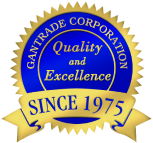
The most basic difference between n-BMA and n-BA is the bulk homopolymer Tg. n-BMA homopolymer has a Tg at 32 °C, near room temperature, while n-BA has a homopolymer Tg of -45 °C. Their reactivities in free-radical polymerizations are also different. Acrylates polymerize faster than methacrylates, but methacrylate monomers add faster to a growing radical chain. This is true because methacrylates form a more stable radical on the propagating end of a growing polymer chain. This characteristic lowers propagation rates due to the higher stability of the tertiary radical and greater steric hindrance.
Acrylates form secondary radicals, which are less stable and thus more reactive. Accordingly, their polymerization kinetics are very different. In exterior applications, the UV and moisture stability of the n-BMA unit is greater. n-BMA in copolymers enhance mechanical properties. n-BA is a commodity monomer, lower in cost than the specialty n-BMA monomer.
The n-BMA monomer imparts a distinct combination of properties associated with high quality exterior paint & coatings, and molded parts. Attributes contributed by n-BMA include the following:
As a homopolymer, n-BMA is used in adhesives and as a polymeric plasticizer for harder resins.
In copolymers, n-BMA applications are water-borne industrial and architectural paints, solvent borne coatings, textile, paper and leather coatings, wood coatings, lacquers and varnishes, adhesives and sealants, inks, toners, caulks, lubricants, and molded parts.
Increasing the level of n-BMA in copolymer finishes also increases the mechanical strength and tensile properties of coated leather, textile or specialty papers.
Molded parts in automotive and electronic applications are an important segment for many end-uses, such as tail-lights, displays and instrument clusters. The largest market segment is automotive coatings, including aftermarket paints, followed by exterior architectural coatings, toners and lubricants.
The United States Food and Drug Administration cites homopolymers and copolymers of N-BMA in the following federal regulation codes (CFRs) covering indirect use in food contact applications such as adhesives, coatings, and packaging.
|
175.105 |
175.320 |
176.180 |
177.1200 |
177.242 |
|
175.300 |
176.170 |
177.1010 |
177.1630 |
177.3790 |
N-Butyl methacrylate hazards include skin sensitization, flammability, and the potential for uncontrolled and rapid polymerization. However, the chemical industry has handled n-BMA safely for more than 80 years.
The following principles must drive the handling and polymerization of n-BMA.
· Use and maintain proper inhibitor levels, as inhibitors are consumed over time.
· Never handle or store N-BMA under an inert atmosphere, as the presence of oxygen is required for the inhibitor to function effectively.
· Observe the recommended storage time and temperatures to prevent depletion of the inhibitor, below 40°C (104°F) and preferably below 30°C (86°F).
· Use proper MOCs and keep tanks, reactors, and piping thoroughly clean
· Prevent contact with amines, strong acids, alkalis, silica, alumina, oxidizing agents, and initiators which can cause spontaneous polymerization.
· Direct contact can cause irritation of the eyes, skin, nose and throat.
The excellent Safe Handling Manual for Methacrylate Esters was issued by the Methacrylate Producers Association and Methacrylate Sector Group of the European Chemical Industry Council in2008. We recommend studying this manual, in its entirety, before using n-BMA.
If you are looking to purchase high-purity n-BMA, Gantrade Corporation markets this monomer in 20 MT (44,000 lbs.) ISO Tanks and in 200 Kg.(441 lbs.) factory-sealed drums for industrial use only.
The purity of our n-BMA is greater than 99.5 percent. Gantrade’s n-BMA contains 50-100 ppm of MEHQ inhibitor. Take a look at Gantrade’s n-BMA sales specifications in the chart below.
At Gantrade Corporation, we offer a broad line of high-quality acrylic and vinyl monomers, supported by knowledgeable professionals. Contact us today to discuss your needs for n-BMA and other chemical products.

